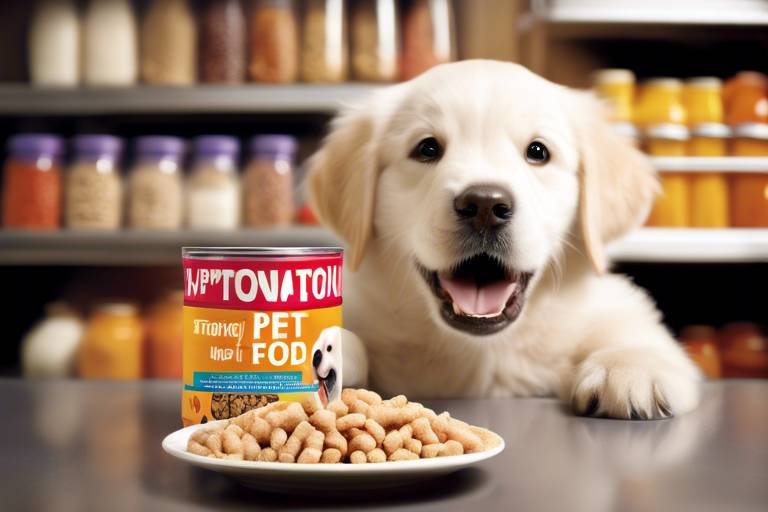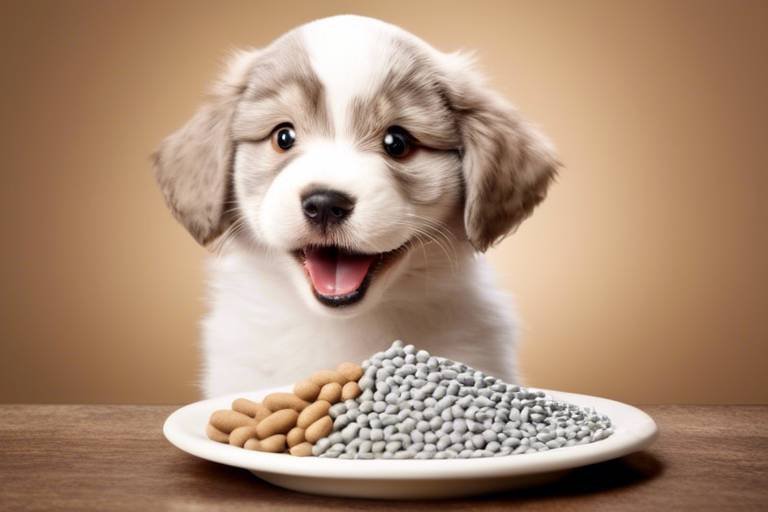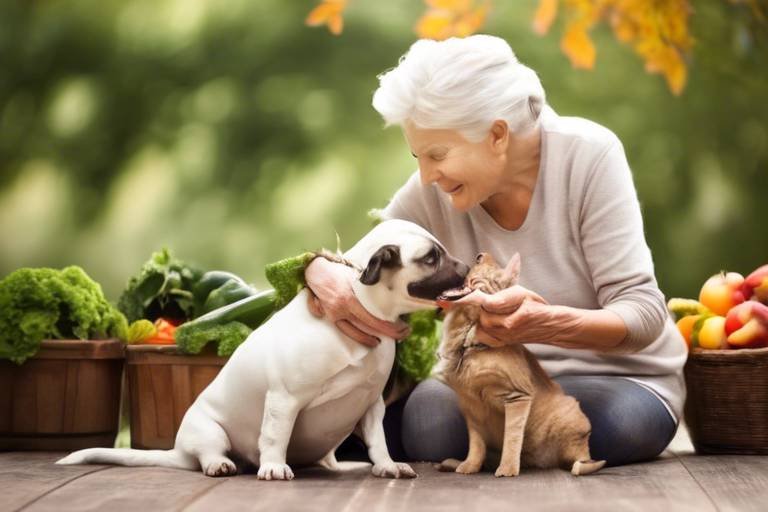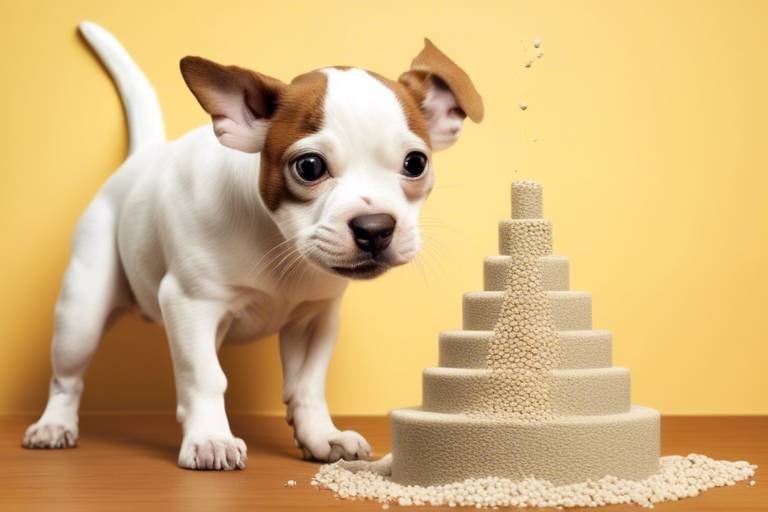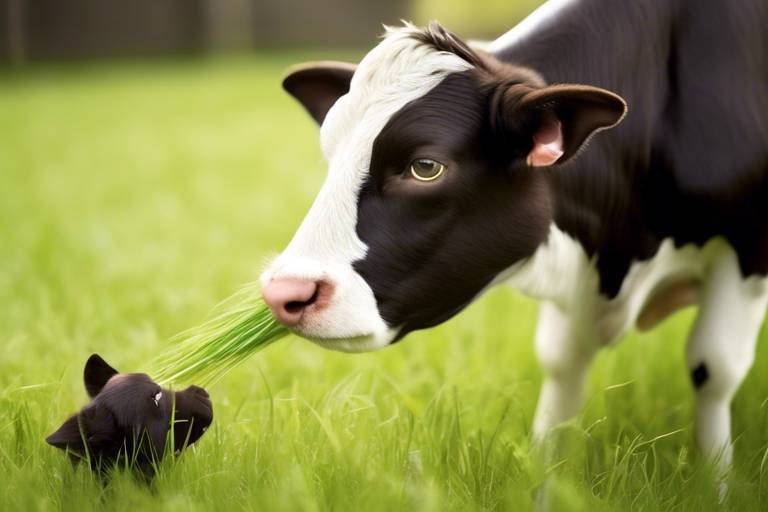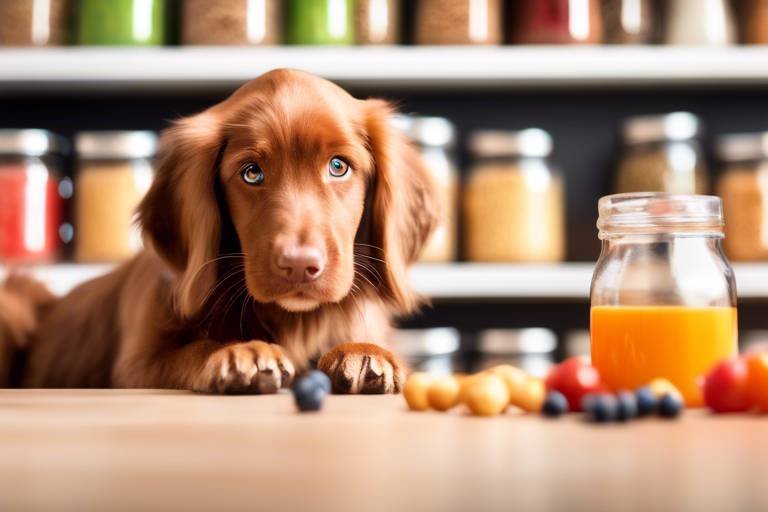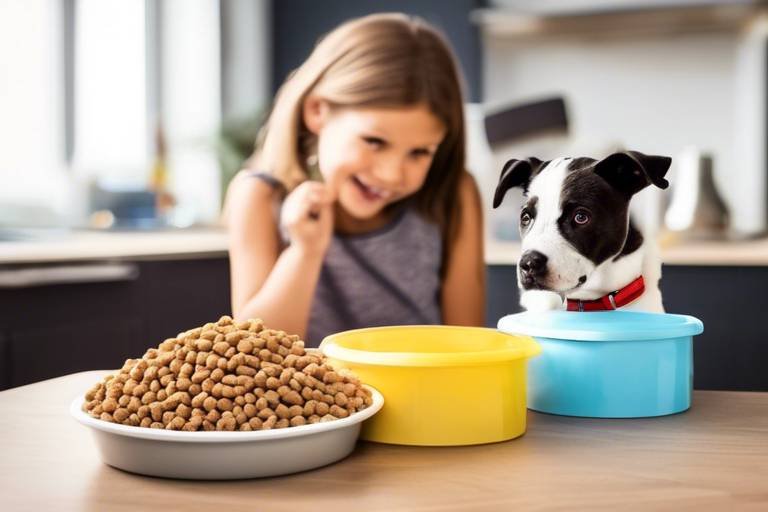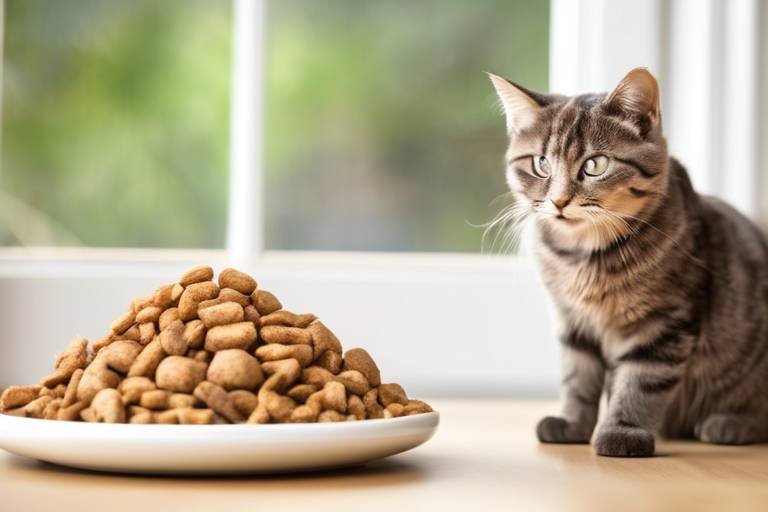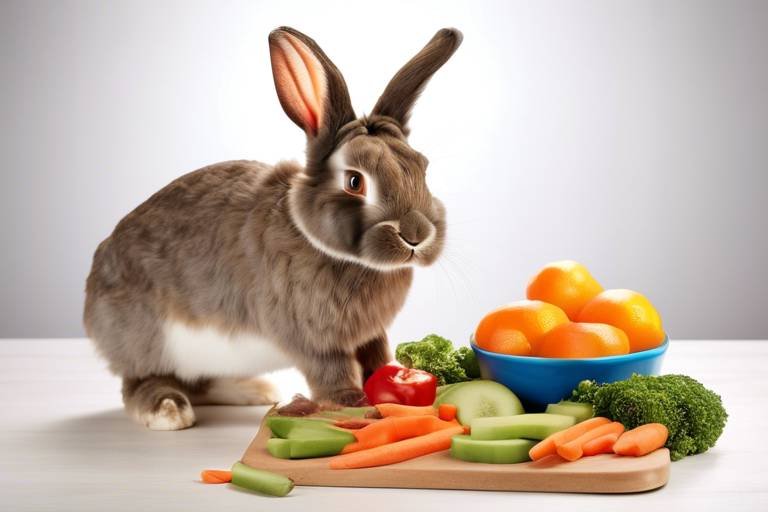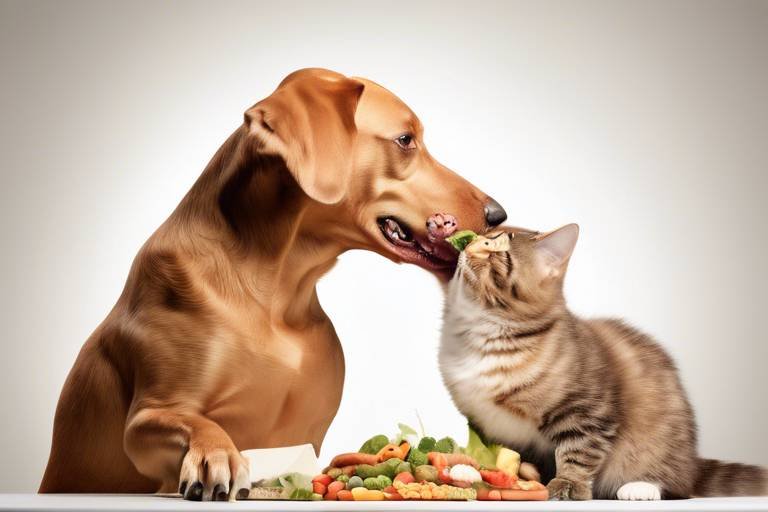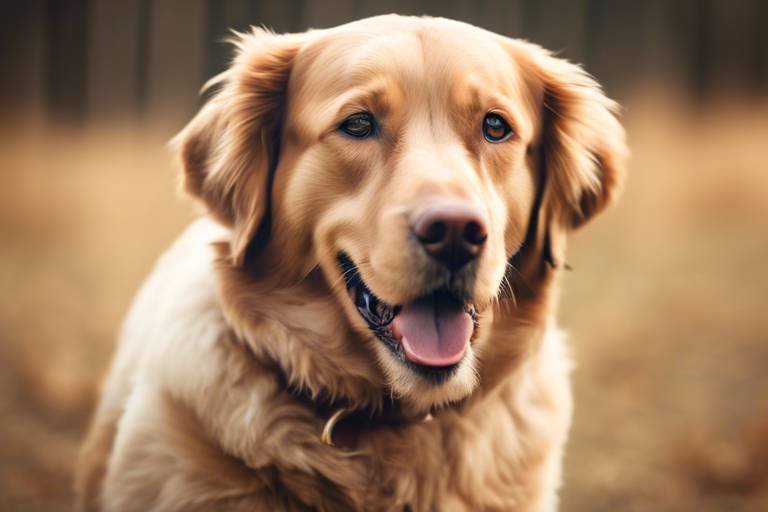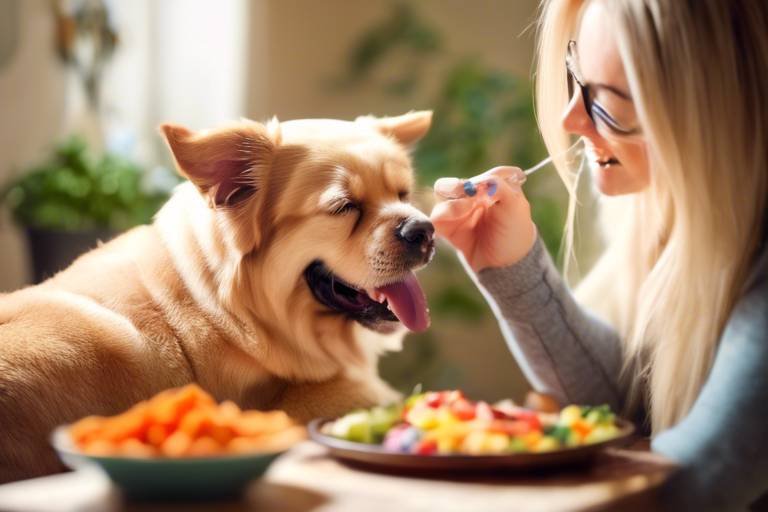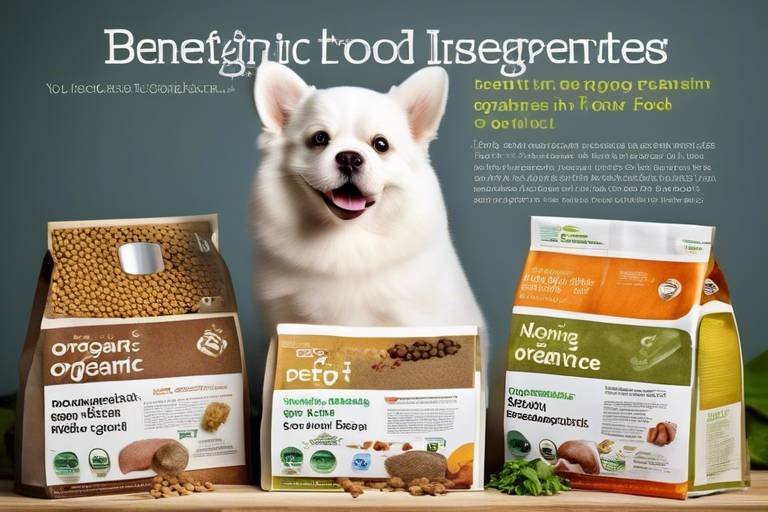The Importance of Food Safety in Pet Nutrition
When it comes to our furry friends, their health is often a top priority for pet owners. One of the most critical aspects that directly influences their well-being is food safety. Just like humans, pets rely on the food they consume to thrive, and ensuring that their meals are safe from harmful substances is paramount. With the rise of various pet food options available in the market, understanding the significance of food safety in pet nutrition has never been more essential.
Food safety in pet nutrition encompasses a wide range of factors, including the quality of ingredients, the manufacturing process, and how the food is stored and handled. Pet owners must be vigilant about these aspects to prevent potential health issues that can arise from contaminated or spoiled food. In this article, we will explore the critical role that food safety plays in pet nutrition, highlighting its impact on pet health, the significance of proper food handling, and regulatory measures to ensure quality pet food.
Imagine this: you’ve just brought home a new bag of kibble for your beloved dog. You’re excited to feed them, but have you considered how that food was made? Was it produced in a facility that follows strict safety protocols? Did the ingredients come from reliable sources? These questions are vital because the answers can significantly affect your pet's health. In the following sections, we will delve deeper into the basics of pet nutrition, common food safety risks, and how you can ensure that your pet's food is both nutritious and safe.
In a world where convenience often trumps caution, it’s easy to overlook the importance of food safety in our pets' lives. However, taking the time to understand this critical aspect can make all the difference in keeping our furry companions healthy and happy. So, let’s embark on this journey to uncover the essential elements of food safety in pet nutrition!
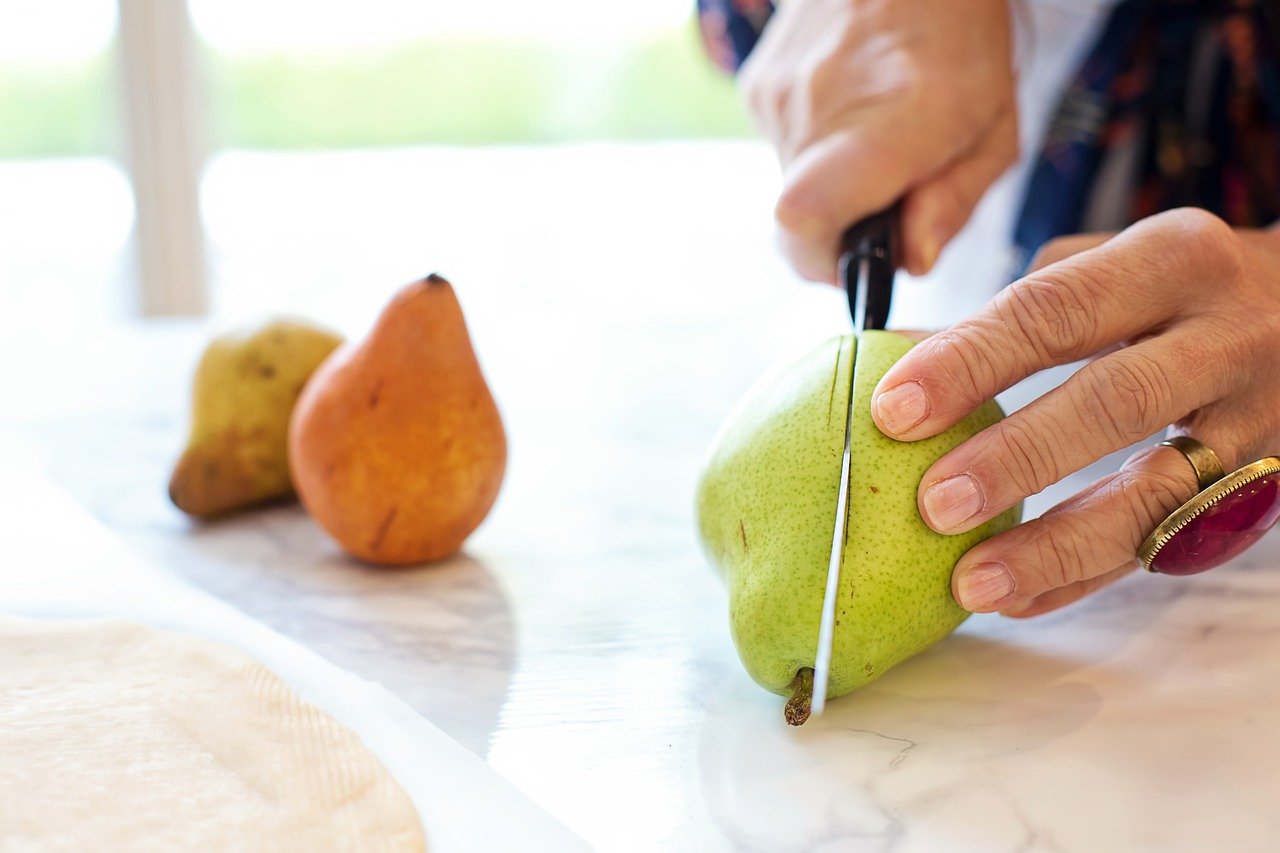
The Basics of Pet Nutrition
This article explores the critical role of food safety in pet nutrition, highlighting its impact on pet health, the significance of proper food handling, and regulatory measures to ensure quality pet food.
Understanding the fundamental components of pet nutrition is essential for pet owners. Just like humans, our furry friends require a balanced diet to thrive. This means that their meals should contain a mix of proteins, carbohydrates, fats, vitamins, and minerals. Imagine trying to run a marathon on just water—it's simply not possible! Similarly, pets need a variety of nutrients to maintain their energy levels, support their immune systems, and keep their coats shiny.
First off, let’s talk about proteins. These are the building blocks of your pet's body, crucial for muscle development and overall health. Common protein sources include chicken, beef, and fish. Next up, we have carbohydrates. These provide energy and can be found in ingredients like grains and vegetables. They also play a role in digestive health, helping to keep things moving smoothly in your pet's gut.
Fats are another vital component. They not only provide energy but also help in the absorption of certain vitamins. Think of fats as the oil in a car engine; without them, everything can grind to a halt. Essential fatty acids, like omega-3 and omega-6, are particularly important for skin and coat health. So, if you notice your pet scratching more than usual, it might be time to check their diet!
Vitamins and minerals, though needed in smaller amounts, are equally important. They support various bodily functions, from bone health to immune response. For instance, calcium and phosphorus are crucial for strong bones and teeth, while vitamins A and E play roles in vision and skin health, respectively.
To make it easier for pet owners to understand these components, here's a simple table summarizing the essential nutrients:
| Nutrient | Function | Sources |
|---|---|---|
| Proteins | Muscle development, tissue repair | Meat, fish, eggs |
| Carbohydrates | Energy, digestive health | Grains, vegetables |
| Fats | Energy, vitamin absorption | Fish oil, chicken fat, flaxseed |
| Vitamins | Support bodily functions | Fruits, vegetables, supplements |
| Minerals | Bone health, metabolic processes | Meat, dairy, greens |
It’s also important to consider your pet's specific dietary requirements based on their age, breed, and health status. For instance, puppies and kittens have different nutritional needs compared to adult pets. They require higher levels of protein and calories to support their rapid growth and energy levels. Conversely, senior pets may benefit from diets lower in calories but enriched with joint-supporting nutrients.
Lastly, remember that balance is key. A diet that lacks variety can lead to nutritional deficiencies, which may manifest in various health issues. Always consult with your veterinarian to create a personalized nutrition plan that suits your pet's unique needs. After all, a healthy pet is a happy pet!
- What should I look for in pet food? Check for high-quality protein sources, balanced nutrients, and avoid artificial additives.
- Is a raw diet safe for my pet? Raw diets can pose risks of bacterial infections. Consult your vet for advice.
- How can I tell if my pet's diet is balanced? Look for a variety of nutrients and consult with a veterinarian for tailored recommendations.

When it comes to our beloved pets, ensuring their health and safety is paramount, and a big part of that responsibility lies in understanding common food safety risks. Just like humans, pets can suffer from foodborne illnesses, and it's our duty as pet owners to mitigate these risks. From contamination to spoilage, there are several factors that can jeopardize the safety of our furry friends' meals. But what exactly should we be on the lookout for? Let's dive in!
One of the most pressing issues in pet nutrition is contamination. This can occur at various stages of food production, from the sourcing of raw ingredients to the manufacturing processes. For instance, if a supplier doesn't follow strict hygiene protocols, harmful bacteria like Salmonella or E. coli can find their way into your pet's food. These pathogens can wreak havoc on your pet's digestive system, leading to serious health complications. It's essential to be aware of the potential sources of contamination and to choose pet food brands that prioritize safety.
Another significant risk is spoilage. Pet food, especially wet or raw varieties, can spoil quickly if not stored properly. Imagine leaving a delicious meal out in the sun for hours—yikes! That’s essentially what happens to pet food when it’s exposed to heat or moisture. Spoiled food can lead to gastrointestinal issues in pets, so always check the expiration dates and store food in a cool, dry place. If you notice any unusual smells or textures, it’s better to be safe than sorry—throw it out!
Improper storage practices can also lead to contamination and spoilage. Many pet owners may not realize that the way they store their pet's food can significantly impact its safety. For example, storing pet food in open containers or in humid environments can invite pests or mold growth. To prevent this, consider the following tips for safe storage:
- Keep pet food in a sealed, airtight container.
- Store food in a cool, dry place away from direct sunlight.
- Avoid transferring food to different containers that may not be clean.
Furthermore, the risks associated with raw diets cannot be ignored. While many pet owners advocate for raw feeding due to its perceived health benefits, it’s crucial to understand the inherent risks. Raw meat can harbor harmful bacteria that can infect both pets and humans. If you're considering a raw diet for your pet, it's vital to follow stringent safety measures, such as sourcing high-quality ingredients and practicing proper food handling techniques.
Lastly, let’s talk about the manufacturing standards that are in place to ensure food safety. Reputable pet food companies adhere to strict regulations and quality control measures during production. This includes regular inspections of facilities, testing for contaminants, and maintaining high hygiene standards. When choosing pet food, look for brands that are transparent about their manufacturing processes and have certifications from recognized organizations.
In conclusion, being aware of these common food safety risks is the first step in ensuring your pet's health. By choosing high-quality food, practicing safe storage, and understanding the risks associated with raw diets, you can significantly reduce the chances of foodborne illnesses affecting your furry companions. Remember, a little knowledge goes a long way in keeping our pets safe and healthy!
Q: How can I tell if my pet food is contaminated?
A: Look for any unusual smells, discoloration, or texture changes. Always check the expiration date and avoid purchasing food from brands with poor safety records.
Q: Is it safe to feed my pet a raw diet?
A: While some pet owners choose raw diets, they come with risks of bacterial contamination. If you opt for this, ensure you follow strict food handling and sourcing guidelines.
Q: What are the best storage practices for pet food?
A: Store pet food in a sealed, airtight container and keep it in a cool, dry place. Avoid leaving food out for extended periods to prevent spoilage.
When we think about pet food safety, one of the most alarming issues that come to mind is contamination. Just like we wouldn't want to eat spoiled or tainted food, our furry friends deserve the same level of care and attention. Contamination can sneak into pet food from various sources, and understanding these is crucial for keeping our pets healthy and happy.
First off, let’s talk about the raw ingredients. Many pet owners are turning to raw diets, believing they are providing the most natural and nutritious options for their pets. However, raw ingredients can be a double-edged sword. They often harbor harmful bacteria such as Salmonella and E. coli, which can not only affect our pets but also pose a risk to humans handling the food. Imagine preparing dinner and accidentally cross-contaminating your kitchen with harmful pathogens. It’s a scary thought, right? The same applies to pet food preparation.
Moreover, the manufacturing process itself can introduce contamination. If a facility does not adhere to strict hygiene practices, bacteria can thrive in the equipment used to produce pet food. This can lead to widespread contamination of the final product. To put it simply, if a factory is a dirty place, the food coming out of it is likely to be dirty too. The importance of manufacturing standards cannot be overstated, as they play a critical role in ensuring that the food we feed our pets is safe for consumption.
Additionally, transportation and storage are crucial stages where contamination can occur. If pet food is not stored at the right temperature or in clean conditions, it can spoil or become contaminated. For instance, storing food in a damp area can lead to mold growth, which can be toxic to pets. It’s essential to keep food in a cool, dry place, away from potential contaminants. This is why understanding how to handle and store pet food properly is vital for every pet owner.
In summary, contamination sources in pet food can come from raw ingredients, the manufacturing process, and improper storage. By being aware of these risks, pet owners can take proactive steps to minimize contamination and keep their pets safe. After all, a healthy pet is a happy pet!
Feeding pets a raw diet has become a popular trend among pet owners who believe it mimics the natural eating habits of their furry companions. However, this approach comes with its own set of risks that every pet owner should be aware of. One of the most significant concerns is the potential for bacterial infections such as Salmonella and E. coli, which can not only affect pets but also pose a risk to humans handling the food. Imagine preparing a gourmet meal for your dog, only to find out that the raw chicken you used was contaminated—yikes!
Moreover, the nutritional balance of a raw diet can be tricky to achieve. While some owners may think they are providing a wholesome meal, they might inadvertently miss critical nutrients that their pets need. For instance, without proper supplementation, a raw diet can lead to deficiencies in calcium, phosphorus, and certain vitamins. It’s like trying to fuel a high-performance sports car with low-grade gas; eventually, it’s going to break down.
Another aspect to consider is the handling and preparation of raw food. It’s crucial to maintain strict hygiene practices when dealing with raw meat to prevent cross-contamination. This includes using separate cutting boards and utensils, washing hands thoroughly, and cleaning surfaces regularly. The last thing you want is for your beloved pet to suffer from foodborne illness because of a simple oversight in the kitchen. To illustrate this point, here’s a quick look at some common risks associated with raw diets:
| Risk | Description |
|---|---|
| Bacterial Infections | Raw meat can harbor harmful bacteria that can infect pets and humans. |
| Nutritional Deficiencies | Improperly balanced raw diets can lead to serious health issues over time. |
| Handling Hazards | Improper handling of raw food can result in cross-contamination and illness. |
In conclusion, while a raw diet may seem like a natural choice for your pet, it’s essential to weigh the risks carefully. Consulting with a veterinarian or a pet nutritionist can help ensure that you’re making the best decision for your furry friend. After all, their health and well-being should always come first!
- Is a raw diet safe for all pets? - Not necessarily. It depends on the individual pet's health and nutritional needs.
- What are the signs of foodborne illness in pets? - Symptoms may include vomiting, diarrhea, lethargy, and loss of appetite.
- How can I ensure my pet's raw diet is balanced? - Work with a veterinarian or a pet nutritionist to formulate a proper diet plan.
When it comes to pet food safety, understanding manufacturing standards is absolutely crucial. These standards are not just arbitrary guidelines; they are the backbone of ensuring that the food we provide to our beloved pets is safe, nutritious, and free from harmful contaminants. Various regulatory bodies, such as the Food and Drug Administration (FDA) in the United States, set forth stringent regulations that pet food manufacturers must adhere to. These regulations cover everything from ingredient sourcing to the final packaging of the product. Without these standards, pet food could be a veritable minefield of potential hazards.
Manufacturers are required to follow Good Manufacturing Practices (GMP), which include protocols for sanitation, quality control, and employee training. For instance, a facility must maintain a clean environment to prevent cross-contamination, which is a common issue that can lead to foodborne illnesses in pets. To illustrate this point, consider the following table that outlines key manufacturing practices:
| Manufacturing Practice | Description |
|---|---|
| Ingredient Quality Control | Regular testing of raw ingredients to ensure they meet safety standards. |
| Sanitation Protocols | Routine cleaning of equipment and facilities to prevent contamination. |
| Employee Training | Training staff on safe food handling practices and hygiene. |
| Traceability Systems | Systems in place to trace ingredients back to their source in case of a recall. |
Moreover, many reputable manufacturers voluntarily comply with additional certifications, such as AAFCO (Association of American Feed Control Officials) standards, which provide an extra layer of assurance regarding the nutritional adequacy of pet food. This is particularly important because, just like humans, pets require a balanced diet to thrive. When manufacturers adhere to these rigorous standards, they not only safeguard the health of pets but also build trust with pet owners who want the best for their furry companions.
In addition to these regulations, transparency in the manufacturing process is becoming increasingly important. Pet owners are more informed than ever and often seek out brands that are open about their ingredient sourcing and manufacturing methods. This has led to a growing trend where companies provide detailed information about their production processes, allowing pet owners to make educated choices. In a world where misinformation can run rampant, knowing that a brand adheres to high manufacturing standards can be a game-changer for pet owners.
In conclusion, the manufacturing standards that govern pet food production are not just bureaucratic red tape; they are essential for ensuring the safety and quality of the food we feed our pets. By understanding these standards, pet owners can make informed decisions and take proactive steps in safeguarding their pets' health. After all, a healthy pet is a happy pet!
- What are the key regulations for pet food manufacturing? Regulations include Good Manufacturing Practices (GMP), ingredient quality control, and sanitation protocols.
- Why is ingredient quality important? High-quality ingredients ensure that pets receive the necessary nutrients without harmful contaminants.
- How can I tell if a pet food brand is reputable? Look for brands that comply with AAFCO standards and provide transparent information about their manufacturing processes.
- What should I do if I suspect my pet's food is contaminated? Contact the manufacturer immediately and consult your veterinarian for advice.
When it comes to ensuring your furry friend's health, proper storage and handling practices for pet food are absolutely essential. Just like how we wouldn't want to eat spoiled food ourselves, our pets deserve the same level of care. Imagine opening a bag of pet food only to find it stale or contaminated—yikes! This is why understanding how to store and handle pet food correctly can make a significant difference in your pet's nutrition and overall well-being.
First and foremost, it's crucial to keep pet food in a cool, dry place. Heat and moisture can lead to spoilage and create an ideal environment for harmful bacteria to thrive. A pantry shelf or a dedicated cabinet away from direct sunlight is often the best choice. If you notice any signs of moisture or mold, it’s time to toss that food out. Remember, the health of your pet is worth more than a few dollars saved!
Additionally, always ensure that the pet food container is sealed tightly. Using airtight containers not only prevents moisture from getting in but also keeps out pesky pests like insects or rodents. You wouldn't leave a bag of chips open, would you? The same principle applies here. It’s also a good idea to label your containers with the purchase date to keep track of freshness.
Now, let’s talk about how to handle pet food during feeding time. Always wash your hands before and after handling pet food to minimize the risk of transferring bacteria. When scooping out food, use a clean scoop or measuring cup—no one wants to mix last week's leftovers with fresh kibble! And remember, if you’re switching your pet’s food, do it gradually over a week to avoid digestive issues.
Another aspect to consider is the expiration date on the packaging. Pet food can lose its nutritional value over time, so always check the date and avoid using food that has expired. If you’re unsure about how long the food has been sitting around, err on the side of caution and replace it. Your pet will thank you for it!
| Storage Tips | Best Practices |
|---|---|
| Keep food in a cool, dry place | Avoid direct sunlight and humidity |
| Use airtight containers | Prevent moisture and pests |
| Check expiration dates | Discard expired food promptly |
| Wash hands before and after handling | Minimize bacteria transfer |
In summary, proper storage and handling practices are not just trivial tasks; they are fundamental to keeping your pet safe and healthy. By following these guidelines, you can help ensure that your pet's meals are not only nutritious but also free from harmful contaminants. After all, a happy pet is a healthy pet!
Q: How long can I store dry pet food?
A: Generally, dry pet food can be stored for up to 6 months after opening if kept in a cool, dry place. Always check the expiration date on the package.
Q: Can I store pet food in the garage?
A: It’s not recommended to store pet food in the garage, especially if it’s subject to temperature fluctuations and humidity. A pantry or cupboard is ideal.
Q: What should I do if my pet food smells bad?
A: If your pet food has an off smell, it’s best to discard it. Bad odors can indicate spoilage or contamination.
Q: Is it safe to mix old and new pet food?
A: It’s generally safe to mix old and new pet food, but make sure the old food is still fresh and has not expired. Gradually introduce the new food to avoid digestive issues.

When it comes to pet nutrition, understanding food labels is absolutely crucial. Just like you wouldn't buy groceries without checking the ingredients, the same principle applies to pet food. A well-informed pet owner can make choices that significantly impact their furry friend's health. So, what should you look for on those labels? First off, you want to ensure that the ingredients are listed in a clear and concise manner. The first few ingredients are typically the most important, as they represent the bulk of the product. Look for high-quality protein sources at the top of the list, such as chicken, beef, or fish. If you see vague terms like "meat by-products," it's a red flag that you might want to steer clear of that product.
Moreover, ingredient transparency is not just about knowing what's in the food; it's also about understanding where those ingredients come from. Many brands are now proudly displaying their sourcing practices, which is a great step towards accountability. For instance, some companies might highlight that their meat is sourced from local farms, while others may indicate that their grains are non-GMO. This level of transparency allows pet owners to feel more confident about the food they are providing to their pets.
Another aspect to consider is the nutritional adequacy statement. This little gem tells you whether the food meets the standards set by the Association of American Feed Control Officials (AAFCO). If the label states that the food is "complete and balanced," it means it has been formulated to meet the nutritional needs of your pet's life stage. If you see phrases like "for intermittent or supplemental feeding only," it’s a sign that the food should not be your pet’s main diet.
To help you navigate pet food labels more effectively, here’s a quick guide on what to look for:
- Protein Sources: Check for named meats rather than meat meals or by-products.
- Grain Quality: Look for whole grains or grain-free options, depending on your pet’s dietary needs.
- Preservatives: Avoid foods with artificial preservatives; opt for natural alternatives instead.
- Nutritional Adequacy: Ensure it meets AAFCO standards for your pet's specific life stage.
In summary, being able to read and understand pet food labels is a powerful tool for pet owners. It not only helps in making informed choices but also empowers you to ensure that your beloved pet is getting the best nutrition possible. With the right knowledge, you can navigate the aisles of pet food products with confidence, knowing that you're making decisions that contribute to your pet's overall health and well-being.
Q1: Why is ingredient transparency important in pet food?
Ingredient transparency ensures that pet owners know exactly what they are feeding their pets, helping them make informed choices about nutrition and health.
Q2: What should I look for in a pet food label?
Look for high-quality protein sources, whole grains, and a nutritional adequacy statement that indicates the food meets AAFCO standards.
Q3: Are there any red flags on pet food labels?
Yes, vague terms like "meat by-products" or products that do not specify where the ingredients are sourced from can be concerning.
Q4: Can I trust all pet food brands?
Not all brands are created equal. It's crucial to do your research and choose brands that prioritize quality ingredients and transparency.
When it comes to choosing the right food for your furry friend, understanding how to read pet food labels is absolutely essential. Pet food labels are like a treasure map, guiding you to the best nutritional choices for your pet. However, these labels can sometimes be overwhelming, filled with jargon and technical terms that might leave you scratching your head. So, how do you decode this information? First, you want to start with the ingredient list, which is usually displayed in descending order by weight. This means that the first few ingredients listed are the most significant components of the food.
Next, take note of the guaranteed analysis, which provides information about the nutrient content of the food. This section will tell you the minimum percentages of protein and fat, as well as the maximum percentages of fiber and moisture. Understanding these values is crucial because they help you assess whether the food meets your pet's dietary needs. For instance, if your dog is highly active, they may require food with higher protein content to support their energy levels.
Another important aspect is the feeding guidelines. These guidelines are often found on the packaging and provide recommendations on how much food to give your pet based on their weight and activity level. However, remember that these are just guidelines; every pet is unique, and factors such as age, health, and lifestyle can influence their dietary requirements. It's always a good idea to consult with your veterinarian to tailor a feeding plan that works best for your pet.
Moreover, don't overlook the expiration date and storage instructions. Just like us, pets can get sick from spoiled food. Always check that the food is within its shelf life and store it according to the manufacturer's recommendations to ensure its freshness. If you're curious about the quality of the ingredients, look for terms like "whole" or "real" in the ingredient list. These terms often indicate higher-quality ingredients, which can lead to better overall health for your pet.
Lastly, be aware of marketing claims. Words like "natural," "premium," or "holistic" can be enticing, but they are often not regulated terms. This means that a product labeled as "natural" might not necessarily be better than one that isn't. Always do your research and focus on the actual ingredients rather than the marketing buzzwords.
In summary, reading pet food labels is not just about checking the box; it's about making informed decisions that significantly impact your pet's health. By understanding these key components, you can ensure that your beloved companion receives the nutrition they need to thrive.
- What should I look for first on a pet food label? Start with the ingredient list, as it shows you the primary components of the food.
- How can I tell if a pet food is high quality? Look for whole ingredients, a high protein content, and avoid foods with excessive fillers or artificial additives.
- Are marketing terms on pet food labels reliable? Not always. Terms like "natural" or "holistic" are not strictly regulated, so focus on the actual ingredients instead.
- How do I determine the right amount of food for my pet? Refer to the feeding guidelines on the label, but consult with your veterinarian for personalized advice based on your pet's specific needs.
When it comes to pet nutrition, the quality of ingredients in their food is paramount. Just like we wouldn’t want to consume low-quality or questionable food, our pets deserve the very best as well. The ingredients used in pet food not only affect the nutritional value but also play a significant role in the overall health and well-being of our furry friends. So, what should you look for when assessing ingredient quality?
First and foremost, whole ingredients should be prioritized. These are ingredients that are minimally processed and come from recognizable sources. For example, instead of a vague term like "meat meal," look for specific sources such as "chicken" or "beef." Whole ingredients are typically more nutritious and provide essential amino acids and vitamins that are crucial for your pet's health.
Another important aspect to consider is the presence of by-products. While some by-products can be nutritious, others may not offer the same health benefits. It’s essential to differentiate between high-quality by-products, like chicken liver, which can provide essential nutrients, and lower-quality ones that may not contribute much to your pet's diet. Always opt for brands that clearly state the source of their by-products.
Additionally, ingredient sourcing matters. Are the ingredients sourced locally, or do they come from questionable suppliers? Transparency in sourcing can often indicate a higher standard of quality. Many reputable brands will proudly display their sourcing practices on their packaging or websites. This transparency not only builds trust but also ensures that the food you’re feeding your pet is safe and nutritious.
Furthermore, be wary of fillers. Fillers are ingredients that offer little to no nutritional value, such as corn or wheat. While these can serve as cheap sources of energy, they often do not provide the essential nutrients that your pet requires. A high-quality pet food should contain a balanced mix of proteins, fats, carbohydrates, vitamins, and minerals, without relying heavily on fillers.
To help you better understand what to look for, here’s a quick reference table:
| Ingredient Type | Quality Indicator | Examples |
|---|---|---|
| Whole Ingredients | Recognizable and minimally processed | Chicken, Salmon, Sweet Potatoes |
| By-Products | Clearly defined and nutritious | Chicken Liver, Fish Meal |
| Fillers | Avoided or minimized | Corn, Wheat, Soy |
Lastly, always check for the presence of preservatives and artificial additives. While some preservatives are necessary to prolong shelf life, artificial colors and flavors can be harmful to your pet’s health. Opt for products that use natural preservatives, such as mixed tocopherols (Vitamin E), instead of synthetic ones.
In conclusion, understanding ingredient quality is not just a matter of preference; it’s a necessity for ensuring your pet’s health and longevity. By being vigilant and informed about what goes into your pet's food, you can help them lead a happier, healthier life. Remember, our pets rely on us to make the best choices for them, so let’s give them the nutrition they truly deserve!
- What should I look for on a pet food label? Look for whole ingredients, specific protein sources, and minimal fillers.
- Are by-products bad for my pet? Not necessarily; high-quality by-products can be nutritious, but always check the source.
- How can I tell if a pet food brand is trustworthy? Look for transparency in sourcing and ingredient quality, and read reviews from other pet owners.
- Should I avoid all fillers? While fillers can provide energy, it’s best to minimize them in favor of more nutritious ingredients.
Frequently Asked Questions
- What are the essential nutrients my pet needs?
Pets require a balanced diet that includes proteins, fats, carbohydrates, vitamins, and minerals. Each nutrient plays a vital role in their overall health, helping maintain energy levels, support growth, and promote a healthy immune system.
- How can I ensure the pet food I buy is safe?
To ensure pet food safety, always check for proper labeling, including expiration dates and ingredient lists. Look for brands that adhere to strict manufacturing standards and have undergone safety testing. Additionally, store pet food in a cool, dry place to prevent spoilage.
- What are common food safety risks associated with pet nutrition?
Common risks include contamination from raw ingredients, spoilage due to improper storage, and bacterial infections from raw diets. It's crucial to be aware of these risks to protect your pet's health.
- How do I read pet food labels effectively?
When reading pet food labels, pay attention to the ingredient list, guaranteed analysis, and feeding guidelines. Look for high-quality ingredients and avoid foods with vague terms like "meat by-products." Understanding these components will help you make informed choices.
- Are raw diets safe for my pet?
Raw diets can pose risks, such as bacterial contamination. If you choose to feed your pet a raw diet, it's essential to follow strict hygiene practices and consult with a veterinarian to ensure it's balanced and safe.
- What should I do if I suspect my pet food is contaminated?
If you suspect contamination, stop feeding the food immediately and consult your veterinarian. You may also want to contact the manufacturer for guidance and report the issue to the appropriate regulatory body.
- Why is ingredient quality important in pet food?
Ingredient quality directly impacts your pet's nutrition and health. High-quality ingredients provide essential nutrients, while low-quality ingredients may lead to health problems. Always choose pet food with clear, high-quality ingredients for optimal health.

